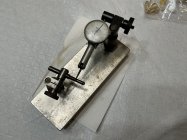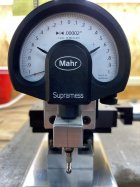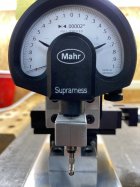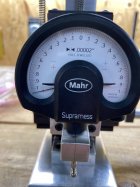Dean, and all interested. Here is a link to some video on my web-page <
https://bibullets.com/bullet-making/ > regarding some of my practices. In answer to questions here, I just made the video on spinning a cored jacket and finished bullet - you'll need to scroll to the last video.
Upon delivery, the first step for every shipment, every item, is to randomly open several cartons and then, two buckets from each carton, and check the jacket wall thickness for variation - that is what determines center-of-gravity offset, which translates static imbalance. For BR quality bullets, the maximum wall thickness variation should be 0.0003": the vast majority of J4 jackets are
<0.0002". The Cg offset will be roughly 1/3Rd of the wall variation, or, on a 0.0003" jacket, 0.0001" of offset.
Roundness (TIR) is independent from wall thickness variation: the two hoops may be perfectly round, but non-concentric . . . it not easy to keep the terminologies straight.

This is a facet that we shooters routinely mix-up and not just with these specific issues - another distinction we should make: precision and accuracy are NOT the same, yet, we regularly interchange them.
Way back when I began making bullets, being dumb and naive, and having observed all sorts of half-baked and clever jacket measuring devices, none of which correlated to a specific DATUM, I contacted SpivCo, Inc., maker of J4 jackets, and requested a full set of their jacket prints, explaining that I wanted to KNOW WHERE to measure the jacket for QC.

To my good fortune, they obliged, sending a set of prints from .224, through .30 Cal.
In all that time, I have had to reject a single jacket Lot - .30 Cal., 1.00" long (100,000 pieces) which, after asking how and where the jackets were measured, they promptly replaced: that Lot displayed
>0.0004" of wall thickness variation. After some discussion, they understood that I was not going to accept "out of spec" . . . and never again did I receive questionable jackets.

That said, I doubt that there is now, or, ever was a human who could shoot the difference: In many discussions with [the late] Allen Bench, he always assured me, that via a rail gun, in a tunnel, up to, at least, 0.0005" wall variation is, "lost in the noise". Mr. Bench was both knowledgeable, and great at constructive criticism.

RG
























